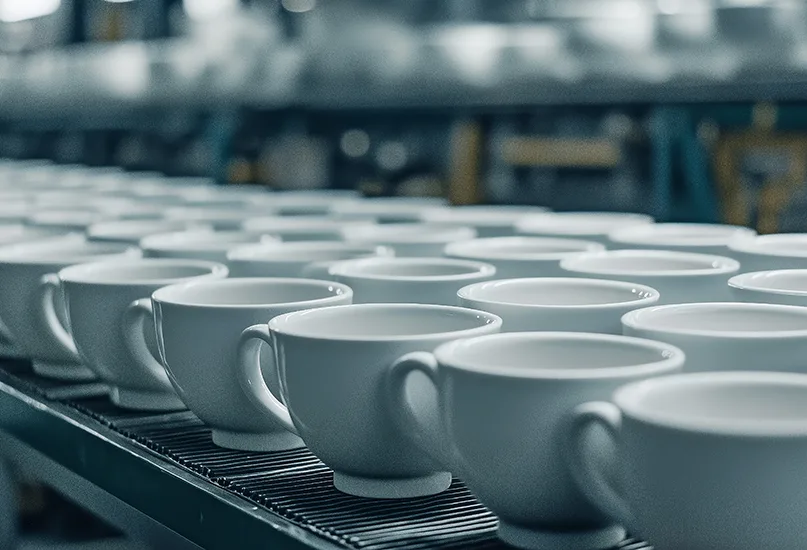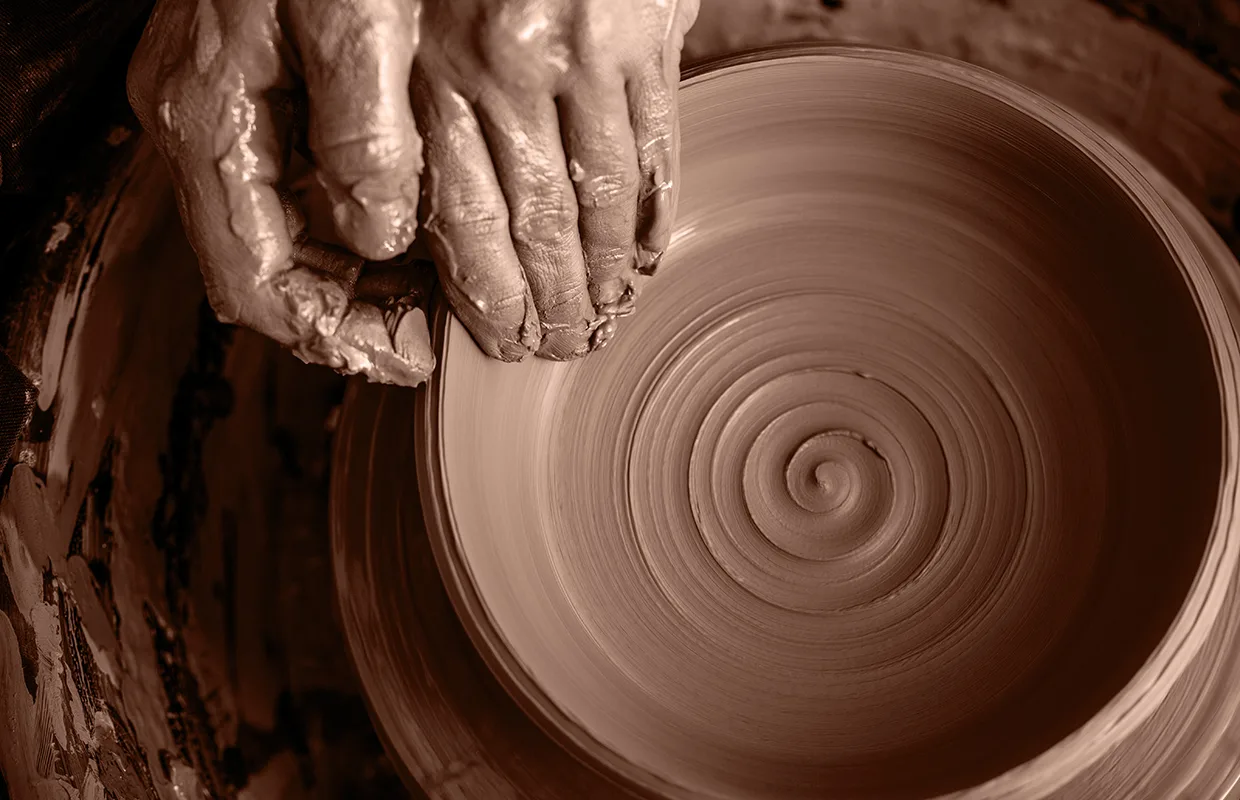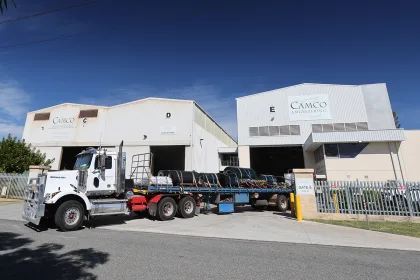Despite undergoing multiple evolutions over the course of history, the ancient craft of pottery continues to prevail today. Its ability to withstand the test of time, alongside its increasing popularity as a modern art form, compels us to view the tradition as an essential contributor to our way of life.
AN UNBREAKABLE TRADITION
Dating back to the early Neolithic era, pottery is one of the oldest human inventions and refers to the practice of shaping clay into a desired form, fixed in place using heat.
Early pots were commonly made using hand-building techniques such as coiling, pinching, and slab building before the pottery wheel gave rise to smoother, more developed shapes.
It is thought that the ancient Egyptians were responsible for creating the first ever kiln to heat and fix the clay – a technique that is still widely used today.
Years later, the emergence of the industrial revolution across Europe saw pottery undergo a major transition, as what was once a primitive village craft quickly became a practice in mass production, leading to the rapid disappearance of many traditional handmade techniques.
By the beginning of the 20th century, only a few remaining potters could be found in rural parts of developing nations such as China and Japan, where major industrialisation was yet to take place.
Influential figures such as Bernard Leach are to be thanked for the revival of pottery as a cherished artform in the western world.
Trained under a Japanese art master, Leach is credited with merging eastern and western pottery techniques and pioneering contemporary ceramic culture. He established a flagship studio in 1920 in St. Ives, which still remains an important site of British pottery.
Today, successful TV series like the BBC’s Great Pottery Throwdown have contributed to a new wave of popularity for ceramics in the UK, underlining how clay is seeping back into the mainstream of contemporary art and culture.

A CELEBRATION OF CULTURES
Pottery, ceramics, and earthenware are some of the most common items unearthed by archaeologists across the world, offering valuable evidence on the activities of past civilizations and human evolution.
With examples dating back thousands of years, the Zulu tribes of Africa are still renowned today for their finely crafted ceramic wares, featuring vibrant colours and symbolic motifs that reflect their cultural identity.
Meanwhile, Ancient Greece saw the rise of the pottery wheel, producing magnificent vases depicting daily life that would later influence European ceramics, such as Italy’s signature terracotta pots from the Renaissance era.
Elsewhere, the Iranian city of Isfahān has become renowned for its use of unique glazes, whilst Japan is known for Raku – a pottery technique featuring crackled glaze textures, emphasising the wabi-sabi aesthetic of finding beauty in imperfection.
Thanks to the millennia of materials, techniques, and decorations acquired from ceramics through the years, today’s potters are privileged to draw inspiration from this rich tapestry of traditions.
MANUFACTURING SAFETY
As the ancient craft of pottery has evolved, the industrialisation and automation of the manufacturing process has seen mass-produced items become increasingly commonplace.
Often manufactured in bulk using moulds, these products are held to extremely high safety and durability standards, such as those administered by the German Institute of Standardisation (DIN).
For example, DIN EN ISO 9001 defines the requirements for quality management and continuous safety checks across international ceramics production lines.
The US Food and Drug Administration (FDA) also has stringent regulations in place, including its assessment and testing of ceramic cups and mugs for extractable lead and cadmium levels around the lip and rim area before they can officially be labelled ‘lead-free’.
In addition, pottery products developed in a factory or on a production line usually achieve uniform results in terms of shape, size, and even thickness, which is important in ensuring consistent quality and safety for customers, particularly for items that must be microwave or oven safe.

SUSTAINING HANDMADE
Despite the benefits presented by mass-produced ceramics, many consumers are increasingly choosing handmade items – not only to help support local artisans and traditions, but to tap into the sense of character and uniqueness that handmade items offer.
For some, the sustainable benefits of buying locally-produced pottery are also beginning to outweigh the safety benefits of mass-produced items.
Typically, handmade wares are thrown, trimmed, glazed by hand, and often made from local materials, resulting in far less associated emissions than importing mass-produced items from overseas.
Meanwhile, sustainable design principles are increasingly being employed by many potters, resulting in functional, high-quality, and long-lasting products.
The philosophy behind sustainable design revolves around producing items that last a lifetime, rather than being disposable or single-use.
FIRING UP FOR THE FUTURE
As TV shows and media trends continue to add to the current wave of popularity gripping the world of pottery and ceramics, clay is undoubtedly making a return to popular culture.
This bodes well for local makers, artisans, and teachers who are capitalising on the increase of consumers wishing to learn the craft for themselves, with enrolment in pottery courses currently at a record high.
Meanwhile, the pottery ceramics market will grow to USD$11.87 billion in 2025 at a compound annual growth rate (CAGR) of four percent.
Overall, whether consumed as an art form or functional production technique, pottery will endure for years to come as a powerful medium for creative cultural expression.

































